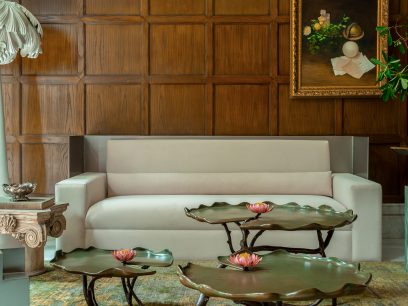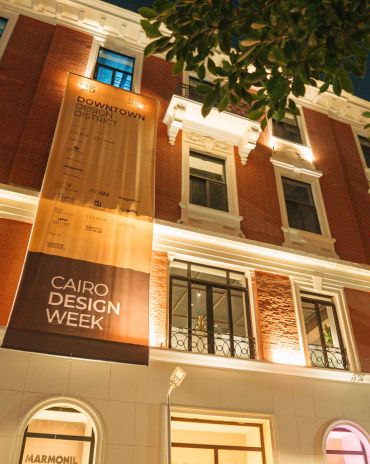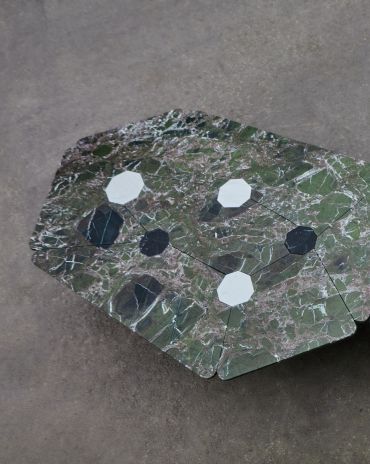Copyright © 2025 Motivate Media Group. All rights reserved.
The Shape of Things to Come: Designers and architects envision the built environment of the future
Downtown Design's exhibition 'Shape of Things to Come' invited regional architects to explore the future

For Downtown Design’s ‘The Shape of Things to Come’ exhibition, regional designers and architects imagine how we may experience the built environment in the future, exploring themes such as public space, the environment and community.
The Productive Centre by MB Consultancy, United Arab Emirates

The global lockdown was a mass experiment that prompted the rise of remote working and in turn communicated its effectiveness in many ways.
This allowed the realisation that many of the neighbourhoods in which we reside in the UAE lack a diversity of function, resulting in isolated scenarios where spaces are dissected into stand-alone functions. There are neighbourhoods for living and working and those for entertainment.
Often, these areas are not within walking distance from each other. The Productive Centre by MB Consultancy considers the interconnectedness between residents and their neighbourhood to create hybrid communities that can be interrelated with the new wave of remote working.
As a result of the studio’s analysis of Dubai’s neighbourhoods, the team developed a prototype for communities that responds to current needs and future challenges. The Productive Centre is an evolution of a neighbourhood hub, comprising facilities that grant residents an opportunity to work remotely, socialise, workout and actively interact within their communities, with the aim of created truly integrated environments.
EVOLVE by Rabih Geha Architects, Lebanon

Post COVID-19, we are still able to visit a nightclub – we just need to find a different way to do it.
Clubbing is a multisensory experience that involves tactile, visual and auditory stimulation. Proximity, the defining feature of crowds, is usually at the heart of the clubbing experience.
With the outbreak of COVID-19, we found ourselves deprived of our sense of touch. There is now a pressing need to redefine the concept of a ‘crowd’. Our natural behaviour remains the same, but has simultaneously changed a lot. We still gather, but in smaller groups; we still greet, but minimise physical contact.
EVOLVE explores the reshaping of our nightlife by creating a new experience that can preserve our need to go out in the midst of a new set of living conditions. Through a layered, concentric layout that is focused on three main factors – space, people and entertainment – crowds can party together, all the while keeping their distance.
This is where limitation in physical freedom is balanced by the expanded sensory experience, leaving room for a new definition of normalcy.
Dilmunia Mosque by Pace, Kuwait

Connecting concepts of well-being with a place of worship, Pace’s proposal embodies local culture, the region’s architectural vernacular and the Muslim faith.
The studio’s design encourages worshippers to immerse themselves in an enriching journey, guided by light, that begins on an elevated streetscape and descends into a sunken portico. The descent from street level is designed to enhance the worshipper’s process of disconnection – both metaphorically and physically – from the outside world.
Each element of the mosque is designed to enhance this spiritual process. The curved portico acts as a reference to the cycle of life and provides guidance to the prayer hall, while a central courtyard engulfed with water acts as a sanctuary for reflection. The illuminated entrance of the prayer hall further encourages the worshipper to a prayer experience that is basked in vertical light to represent one’s connection with God.
VOW by Sibyl, Kingdom of Saudi Arabia

Designed to be a physical and psychological reaction to urban ecosystems in Jeddah, the concept for this modular, multi-layered pedestrian system was born out of Sibyl’s research into how infrastructural interventions could support an organic evolution of the Middle East’s urban fabric.
Exploring how the pedestrian walkways of Jeddah, ‘Al-Mamsha’, could evolve as a response to the restrictions placed upon movement and interaction due to the COVID-19 pandemic, the studio has developed ‘The Mamsha of Al-Tahliya Street’, perpendicular to the city’s growth along the corniche. The project looks to expand the city’s urban network from the west to east, allowing dwellers to adapt, move and connect organically.
The proposed solution of a split-level network acts as the neighbourhood’s ‘spinal cord’, where traffic is segmented in two colour-coded levels, offering controlled solutions for pedestrian traffic, running tracks and cycling paths that are able to coexist within the rules of social distancing. On the ground level, the network allows the community to reconnect with communal spaces, sunken shops and skate parks.
In the midst of these two zones, an open-air, tree-lined zone for resting and solitude is designed as a stepped platform.
The Latest
A Home Away from Home
This home, designed by Blush International at the Atlantis The Royal Residences, perfectly balances practicality and beauty
Design Take: China Tang Dubai
Heritage aesthetics redefined through scale, texture, and vision.
Dubai Design Week: A Retrospective
The identity team were actively involved in Dubai Design Week and Downtown Design, capturing collaborations and taking part in key dialogues with the industry. Here’s an overview.
Highlights of Cairo Design Week 2025
Art, architecture, and culture shaped up this year's Cairo Design Week.
A Modern Haven
Sophie Paterson Interiors brings a refined, contemporary sensibility to a family home in Oman, blending soft luxury with subtle nods to local heritage
Past Reveals Future
Maison&Objet Paris returns from 15 to 19 January 2026 under the banner of excellence and savoir-faire
Sensory Design
Designed by Wangan Studio, this avant-garde space, dedicated to care, feels like a contemporary art gallery
Winner’s Panel with IF Hub
identity gathered for a conversation on 'The Art of Design - Curation and Storytelling'.
Building Spaces That Endure
identity hosted a panel in collaboration with GROHE.
Asterite by Roula Salamoun
Capturing a moment of natural order, Asterite gathers elemental fragments into a grounded formation.
Maison Aimée Opens Its New Flagship Showroom
The Dubai-based design house opens its new showroom at the Kia building in Al Quoz.
Crafting Heritage: David and Nicolas on Abu Dhabi’s Equestrian Spaces
Inside the philosophy, collaboration, and vision behind the Equestrian Library and Saddle Workshop.
















